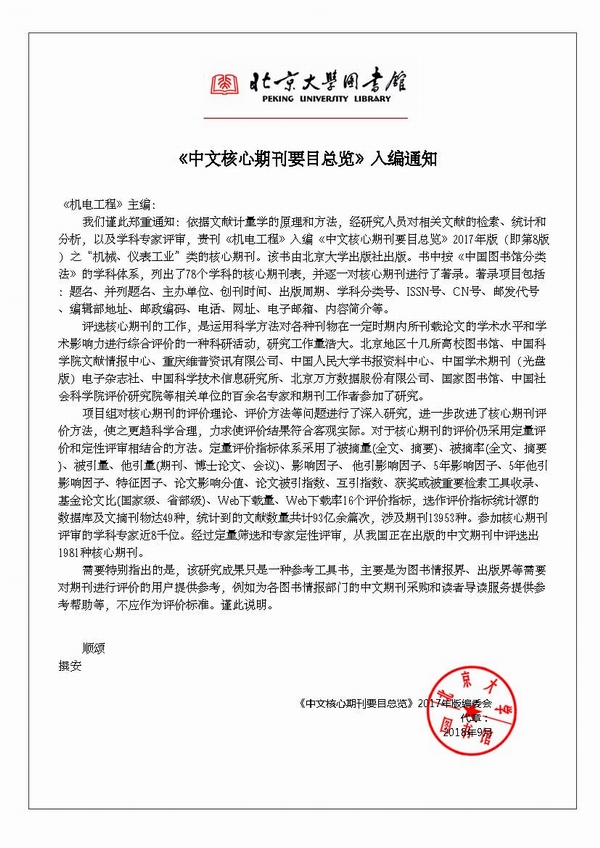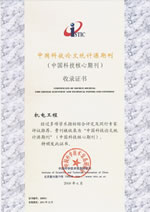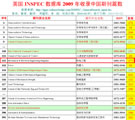
Founded in 1971 >
Chinese Sci-tech Core Periodicals >
British Science Abstracts (SA, INSPEC) Indexed Journals >
United States, Cambridge Scientific Abstract: Technology (CSA: T) Indexed Journals >
United States, Ulrich's Periodicals Directory(UPD)Indexed Journals >
United States, Cambridge Scientific Abstract: Natural Science (CSA: NS) Indexed Journals >
Poland ,Index of Copernicus(IC) Indexed Journals >
International Standard Serial Number:
ISSN 1001-4551
Sponsor:
Zhejiang University;
Zhejiang Machinery and Electrical Group
Edited by:
Editorial of Journal of Mechanical & Electrical Engineering
Chief Editor:
ZHAO Qun
Vice Chief Editor:
TANG ren-zhong,
LUO Xiang-yang
Tel:
86-571-87041360,87239525
Fax:
86-571-87239571
Add:
No.9 Gaoguannong,Daxue Road,Hangzhou,China
P.C:
310009
E-mail:
meem_contribute@163.com
Abstract: Experimental research on nanosecond pulsed laser polishing under thermal assistance was carried out aiming at improving its quality and efficiency. First, on the basis of qualitative analysis of the effect of workpiece thermal assistance on laser polishing, the original surface of additively manufactured Ti-6Al-4V was used as the test object, and the confocal microscope, scanning electron microscope and energy spectrometer were used to analyze the polished surface and cross-section under different energy density and compensation temperature. Then the relationship between the compensation temperature of the workpiece, the laser energy and the surface processing quality was revealed. Furthermore, Vickers hardness tester was applied to measure its hardness, and the influence of the recrystallized layer; the molten layer on the surface quality was also analyzed. The results indicate that at a higher compensation temperature, heat-assisted laser polishing can obtain a similar surface roughness as under the no heat-assisted conditions with a lower energy density. It also shows that under the same laser output power, the higher the compensation temperature, the higher the scanning speed of thermally assisted laser polishing can be, so as to effectively improve the efficiency of nanosecond pulse laser polishing.
Key words: thermally assisted laser processing; laser polishing; surface quality; titanium alloy








